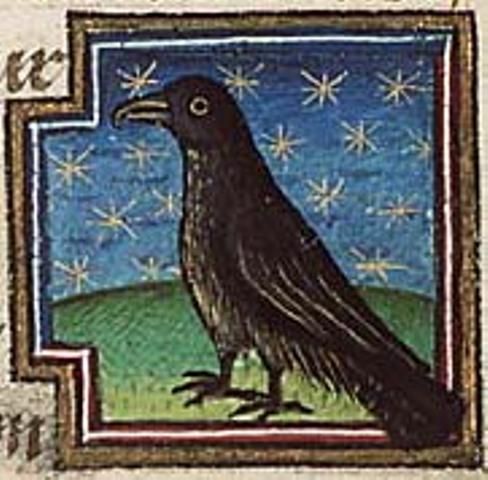















Peredur
Semi-legendary figure from Welsh history and myth.
The figure of Peredur is a complicated one; arguably, there are several Peredurs--the historical North Britain chieftain, the Percival figure, and a mythical king mentioned by Geoffrey of Monmouth. How--or if--these figures are related is a subject of debate.
Peredur in History
The earliest mention of the name Peredur occurs in the Harleian 3859 genealogies (text dated to the ninth century, manuscript to the late 11th), where he is mentioned with his brother Gurgi: "[G]urci ha Peretur mepion Eleuther". They are placed among the Gwyr y Gogledd--the old kings of the North, places like Strathclyde, Rheged (modern Cumbria), Gododdin (Northumbria), and Eubracium (York). He is also mentioned in Y Gododdin (seventh century), where he's called Peredur arveu dur gwawr: "Peredur with steel arms" (XXXI). According to Y Gododdin, Peredur is killed in the battle of Catterick. The Annales Cambriae puts their death in the year 580; this may be the time of the battle, but it isn't mentioned in the text. If, as later sources say, Peredur and Gurgi fought in the Battle of Arddured in 573, this indicates they likely survived that battle to fight at Catterick.
The name Peredur appears next in Geoffrey of Monmouth's History of the Kings of Britain, where he is two people. The first is one of Morvidus' five sons: Gorbonian, Arthgallo, Elidur, Peredure, and Vigenius. They succeed each other on the throne, with Peredur gaining his throne by rising with his brother Vigenius against Elidur. Geoffrey puts this before the time of Heli and Lud, and thus before the Roman invasion.
The second Peredur is Peredur, son of Eridur, a knight at Arthur's court; nothing else is said of him. This Peredur is likely the one who developed into the mythical Peredur.
In both these cases, it's evident that Geoffrey is borrowing from the historical Peredur son of Eleuther. The first Peredur is the brother of an Elidur, and the second the son of an Elidur. In each case, Elidur is a form of Eleuther, and it's likely Geoffrey was using a king of the north for one of his mythical kings, just as he used Cunedda and Coel among others.
The next mention of this Peredur is connected to the battle of Arddured (Arthuret), dated to 573 by the Annales. The text which mentions this is Geoffrey's Vita Merlini. Here, Peredur is called the king of the North Welsh--which may refer to northern Britain--and he goes to war against Gwendolau, "king of Scotland". Merlin battles on the side of Peredur, and after Merlin goes mad Peredur is one of the men who try (unsuccessfully) to offer comfort to him.
Ultimately, it is believed that there was a Peredur, who was chieftain or king of one of the Gogledd kingdoms. This intersects with the mythical Peredur, who is a complicated case.
Peredur in Myth
The other Peredur appears in Peredur vab Efrawg, a Welsh romance influenced by Chretien de Troyes' Perceval. Much of the romance borrows from the French romance and the First Continuation with native elements overlaid on the foreign (such as the elements of the white stag/unicorn and the chessboard/gwyddbwyll board).
Like the historical Peredur, the mythic Peredur is the surviving son of a northern king; his father Efrawg's name is the Welsh name for York, and it is possible that the real Peredur's unidentified kingdom was, in fact, sub-Roman York. Rachel Bromwich mentions the theory that Peredur's name is derived from "pr(a)etor ab eubracium"--that is, a magistrate for York. It's entirely possible that a title became a proper name, or that "Peredur" was descended of the Roman rulers of York.
This Peredur has obvious mythical elements: he is the seventh son; he is raised away from civilization by his mother. He is often at war with the witches of Caer Lowy, who are enemies of his family. He is nephew to the lame king of the Castle of Wonders, a version of the Fisher King. He becomes the lover of the Empress of Constantinople, who gives him a ring of invisibility. The antagonism towards Caer Lowy and his being raise far away from other human contact is reminiscent of the story of Mabon; it may be that Peredur gained these elements by way of the story of Pryderi of the Mabinogi, whose story is influenced by that of Mabon. Secondly, it may not be coincidence that both Pryderi and Peredur have companions named Gwrgi.
How the historical Peredur became the mythical Peredur is unknown, but it's hardly unique--why was the similar historical king Owain son of Urien turned into Yvain, Knight of the Lion?

Back to "P" | Back to JCE
Home
Mary Jones © 2006